Dijon mustard from Paris
Mustard is an indispensable seasoning in cuisines worldwide. The French city of Dijon emerged as the world capital of mustard, and the house of Maille played a big role in that. Like me, do you love velvety but also spicy mustard? Follow me to Paris, where the house of Maille will let you taste the most delicious Dijon mustard in all its varieties.
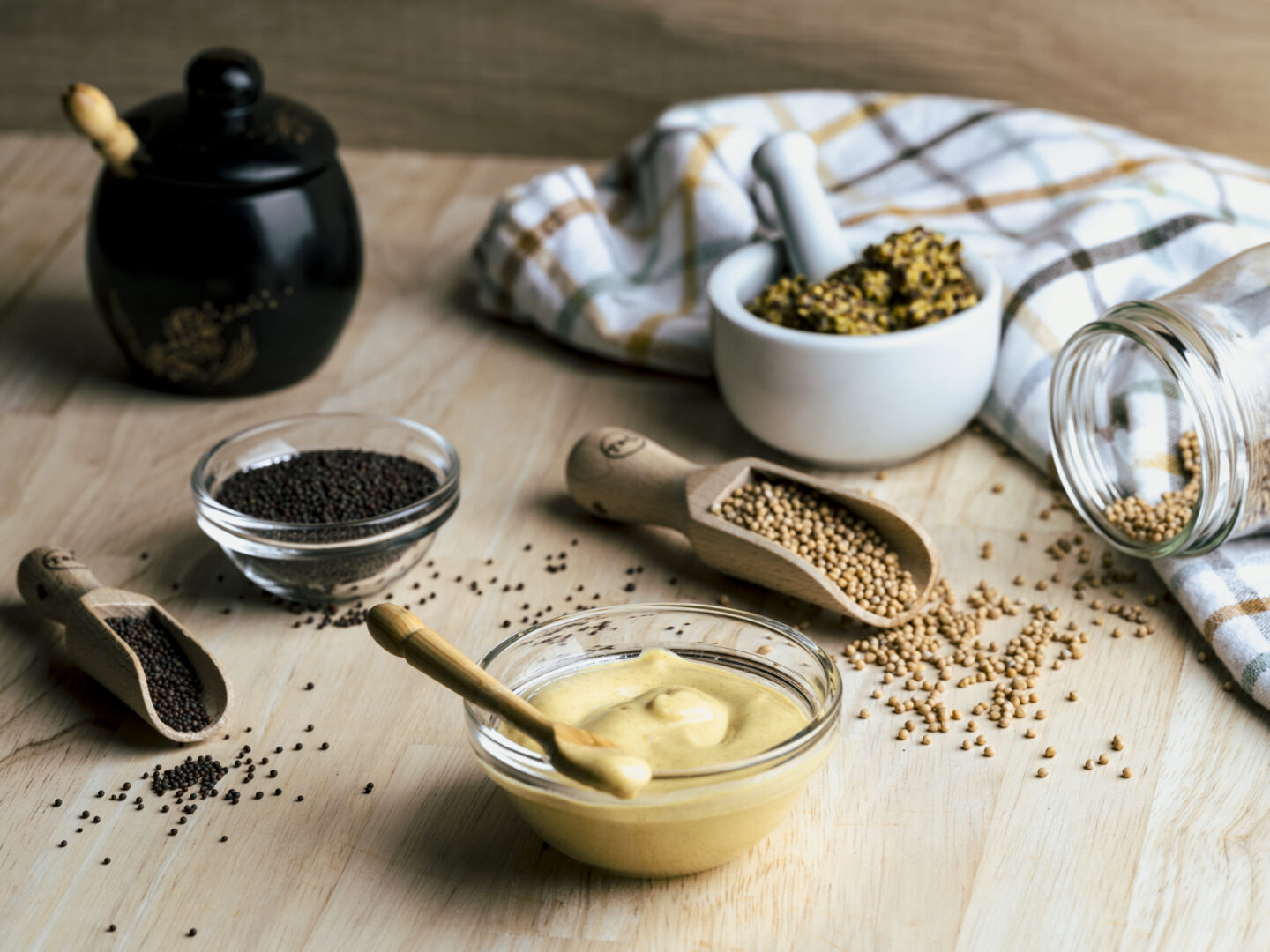
What is mustard and how do you make it?
Mustard is a condiment like an herb or spice that you add to a dish to support or elevate its flavor. The basic formula for making mustard is very simple. You grind mustard seeds with vinegar, water and salt. Piece of cake, you might think. But it's not as simple as it seems. It takes a lot of knowledge and experience to get proportions right and to achieve a good result with the right kinds of mustard seeds and vinegar.
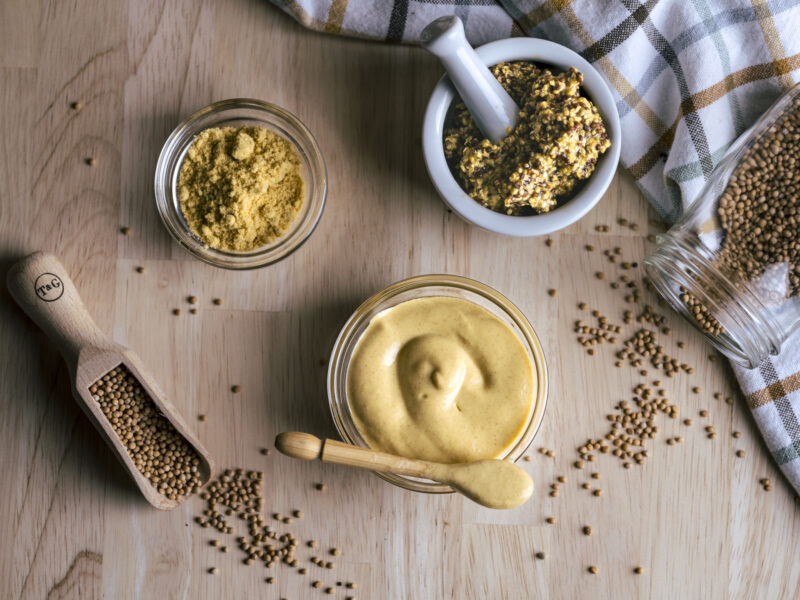
Mustard, flavoring through the ages
Did you know that mustard was already being made in China 3,000 years ago? In Ancient Egypt, mustard seeds accompanied the dead on their way to the afterlife, and among the Ancient Greeks and Romans, mustard graced the tables of the rich. The condiment thus made its way to Gaul. In the 14th century, during the time of the Dukes of Burgundy, mustard on the table was a sign of abundance and refinement. Pepper from the exotic Far East was so expensive that it was often replaced by mustard. The mustard seed from Burgundy, due to its climate and soil, is strong and pungent in flavor. The dukes made local mustard a specialty and issued strict regulations for how mustard was made.
Moutarde de Dijon
In the 18th century, Jean Naigeon, Dijon mustard maker, replaced the usual vinegar with verjus. Verjus is juice made from green grapes. It works in the same way as lemon juice, which was very expensive at the time. With this process, Naigeon lays the foundation for the industrial production of superior quality mustard. Dijon becomes at once the universal capital of mustard.
Antoine-Claude Maille, contemporary and rival of Naigeon, makes vinegar-based beauty and personal care products in addition to mustard. He opens a store in Paris and is an immediate success with high nobility. The house of Maille is subsequently appointed supplier of mustard and vinegar to all the royal courts of Europe.
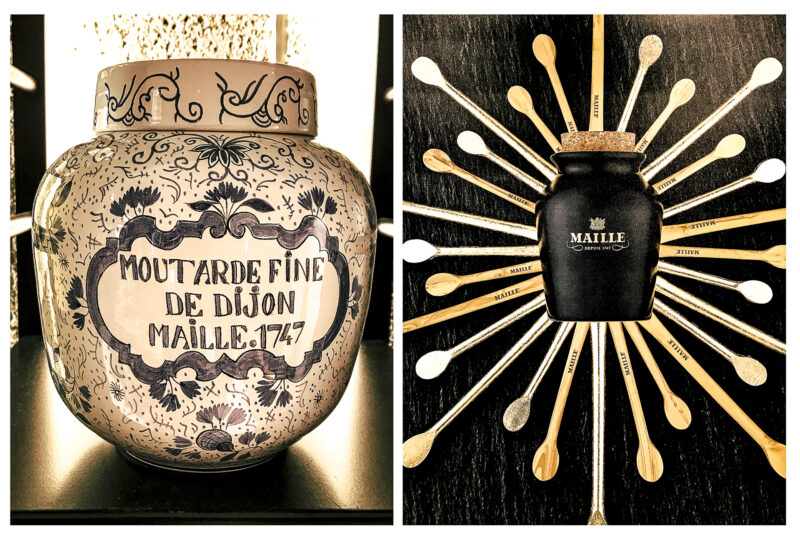
Moutarde de Dijon, not an appellation contrôlée
Moutarde de Dijon has a very strong brand name but is not protected by an appellation contrôlée. Is the mustard made with Canadian mustard seed, which accounts for 80% of world production, or produced outside France? The product may still bear the designation Dijon mustard. Technically, any mustard produced with verjus according to the specific rules of Dijon may carry the label Dijon mustard.
Moutarde de Bourgogne, an IGP
In contrast, moutarde de Bourgogne is protected by an IGP, a protected geographical indication. The conditions are very strict:
- The mustard seeds come from Burgundy
- The white wine used is white aligoté wine from Burgundy
- Production takes place in Burgundy

Mustard is healthy
Mustard seed is bursting with vitamins and minerals. Furthermore, mustard is rich in omega-3 fatty acids that are important for fat regulation in the blood. Eating mustard with a piece of meat helps you digest the fatty elements.
Mustard also has medicinal properties. It acts as a stimulant and laxative. It is used in the treatment of fever and as a poultice to relieve bronchitis and rheumatism.
The little store at Place de la Madeleine
In a far corner of the Place de la Madeleine, hidden behind the trees and a newspaper stand, there is a small store. It is a gem in the Parisian landscape of gastronomy. Here, people come from far and wide to buy a jar of the omnipresent staple of world cuisine: mustard. Welcome to the world of Maille. A must stop on your next visit to Paris and my go-to address for top-quality mustard. Here you don't buy just any jar of mustard. Next to the classic Dijon mustard, you'll find mustard flavored with fruit, berries, spices, wine or mushrooms. In short, any combination you can think of. You can also choose from a wide range of vinegars and sauces, but I always go straight for the traditional serving of mustard on tap.
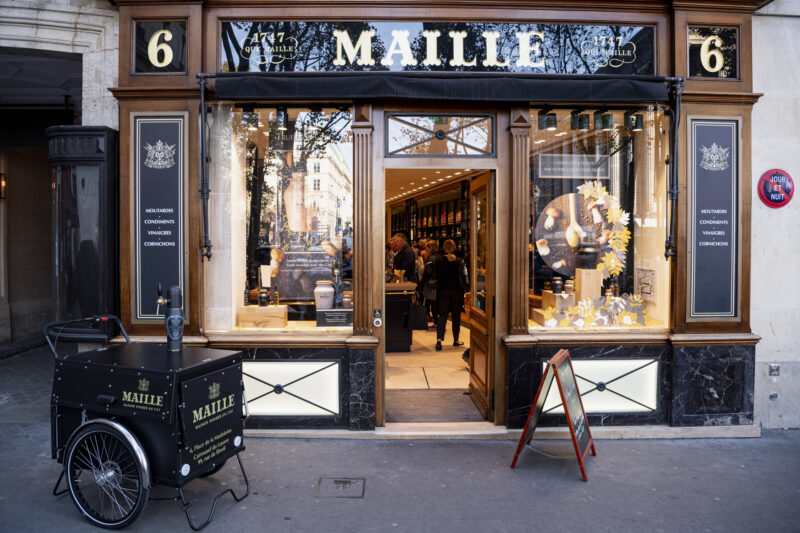
Tapping mustard like beer
Several copper taps, reminiscent of beer taps in a pub, are installed on an old-fashioned, wooden counter. But there is no beer flowing from these! Mustard is drawn through the tap from tanks in the basement and poured directly into earthenware jars. You can reuse the jars, made in Burgundy, as many times as you like. You can also personalize your earthenware pot with a name or message. A very nice gift idea.
You can buy about six varieties of mustard on tap in the Maille store. The grain mustard with chardonnay and the basic mustard with chablis are both a must. They are my favorites because of their intense and balanced flavor. Are you up for more complex flavors? Then try the mustard with white or black truffle. The newest additions to the series are mustard with Scotch whisky and smoked black pepper, and mustard with honey and rosemary. Both are finger licking delicious! And the best part about all this is that you can taste the different types of mustard on the spot before deciding which one to take.
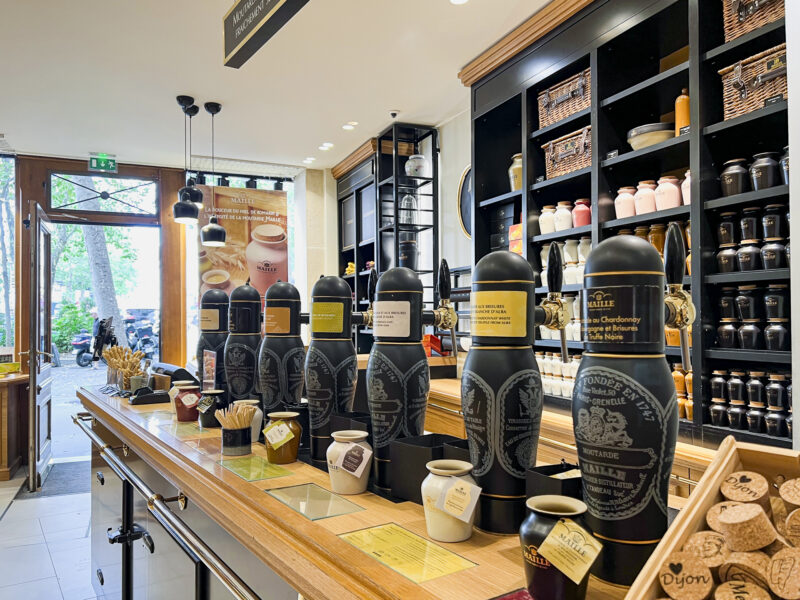
Mustard goes with everything
Did you know that, after salt and pepper, mustard is the most consumed product in the world? And that's not surprising. Mustard really goes with everything: meat, fish, poultry and vegetables, you name it, not to mention cheese and the sauces that fall or stand with mustard.
I add the velvety chablis mustard to beef stew. Old-style mustard is very tasty with vegetables and cheese. Think of having a nice Belgian Trappist beer accompanied by cheese cubes or slices of dried sausage dipped in grain mustard. Delicious! Old-style mustard also tastes delicious in a vinaigrette you serve over a salad of potatoes and green beans. Mustard with truffle is a heavenly combo with risotto or potatoes. I use mustard with honey and rosemary in my recipe for duck with roasted fresh figs . The sauce you cannot make without Dijon mustard is the French mustard vinaigrette.
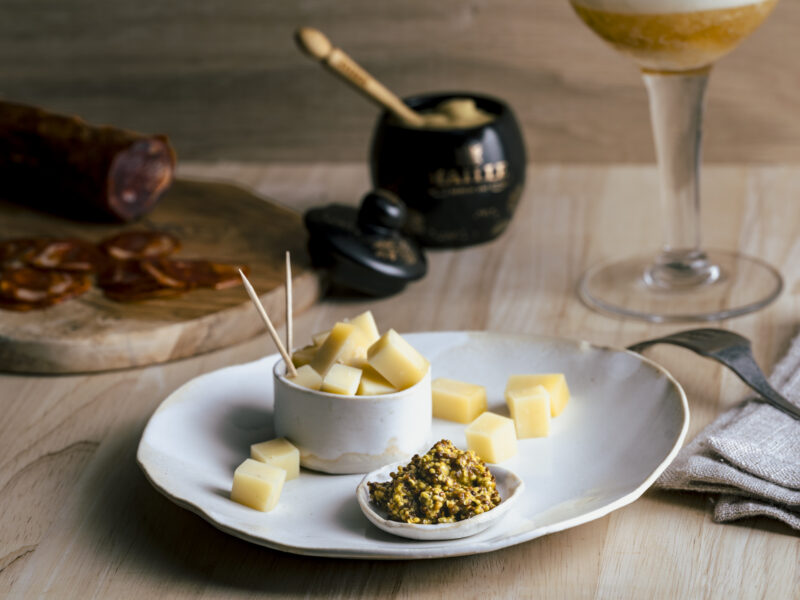
Where to buy Maille Dijon mustard at the pump?
Maison Maille has boutiques in Paris and Dijon. Maille has an online store but delivers only in France, Monaco and Luxembourg.
Maille Paris: 6, Place de la Madeleine, 75008 Paris
Maille Dijon: 32, rue de la Liberté, 21000 Dijon
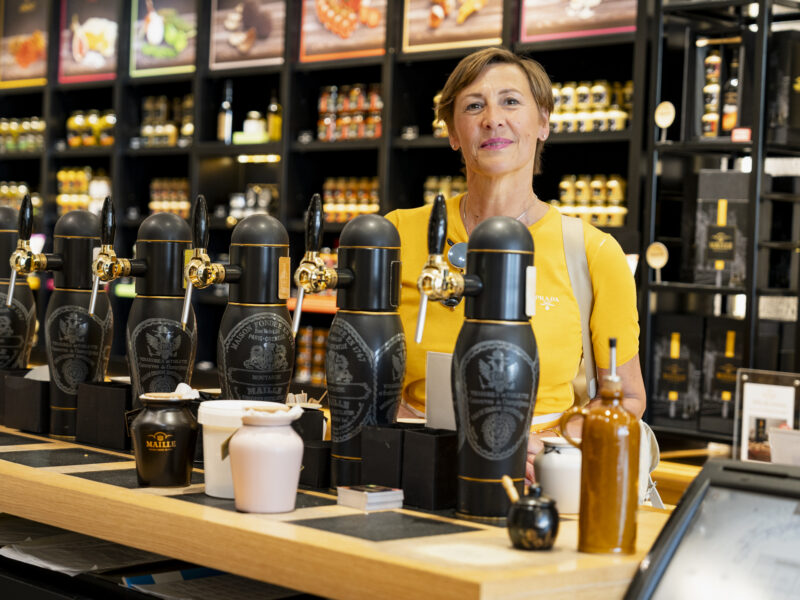
Recipe: French mustard vinaigrette
The classic acid-to-oil ratio in a vinaigrette is 1-to-3. You can always adjust the proportion to your own taste and preference. You can also replace the vinegar with lemon.
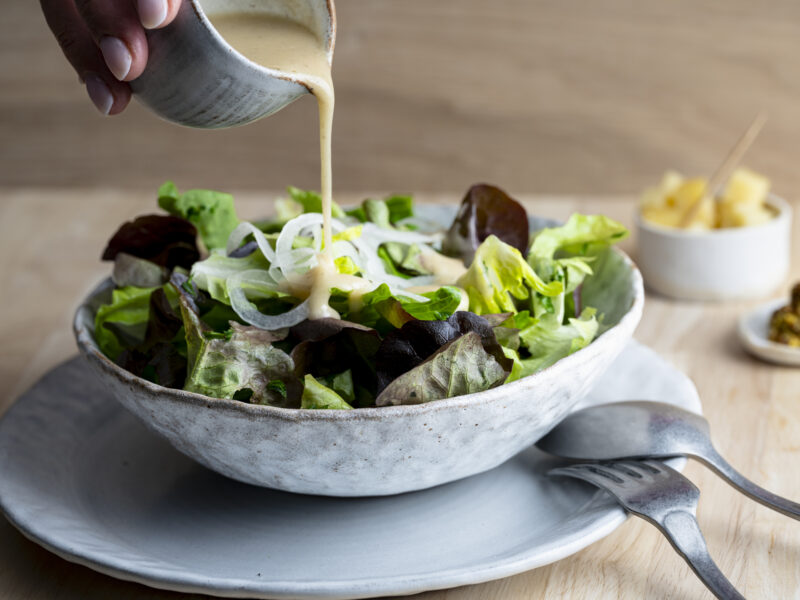
Ingredients
- 1 tablespoon Dijon mustard
- 50 ml white wine vinegar
- 150 ml vegetable oil, but not olive oil
- ¼ teaspoon salt
- Freshly ground pepper
-
Preparation
In a small mixing bowl, stir together the mustard and vinegar with a whisk. Use a wooden spoon to take the mustard from the jar to prevent oxidation. Now gradually add in the oil while continuing to whisk. Do not add the oil too quickly or you will end up with a greasy dressing instead of a velvety vinaigrette. Season to taste with salt and pepper.
If the vinaigrette is too thick, add a tablespoon of lukewarm water. If you want to keep the vinaigrette in the refrigerator for 2 to 3 days, just whisk in a teaspoon of mayonnaise. The dressing will become even creamier and remain stable.